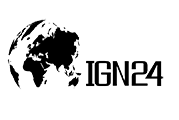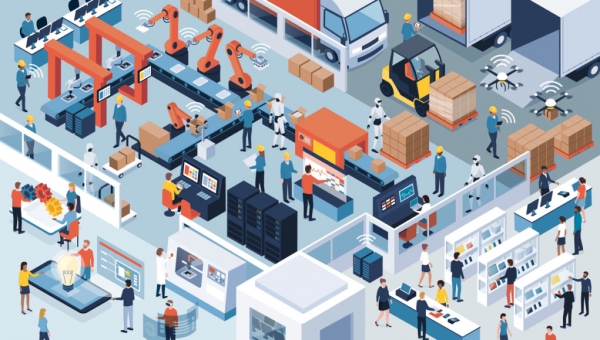A major revolution of the energy market is ongoing and the Internet of Things is helping to push this transition, along with solar, wind, storage and other innovations. From generation to transition to delivery, it is revolutionizing almost every aspect of the industry and transforming how energy producers and consumers communicate. Attaching IoT sensors to equipment for generation, transmission and distribution will allow energy companies to remotely track it. In order to optimize maintenance schedules, these sensors calculate parameters such as vibration, temperature and wear. By maintaining equipment in optimal facilities and having the opportunity to make repairs before it fails, this preventive maintenance strategy will greatly boost reliability. This may also be supported by digital twin technology, which includes making an advanced digital image of an actual piece of equipment. IoT sensors attached to the physical unit collect data that they feed to the digital twin about its output.
Request for Sample Copy of This Report@ https://www.absolutemarketsinsights.com/request_sample.php?id=200
This technology allows virtual troubleshooting and assistance from remote locations, in addition to supporting preventive maintenance programmers. In order to increase security, IoT devices can also assist and reduce leaks are wasteful assets which leads to global warming, due to the surge in rooftop solar and other technology, the electricity grid is becoming more dispersed. According to Credit Suisse’s report, residential solar capacity has increased rapidly in recent years and could rise by more than three times to 41 gigawatts by 2025. By installing solar panels on the rooftops or constructing small wind turbines homeowners and businesses can now produce their own electricity.
For energy firms, this increasingly distributed power structure represents a significant shift; in addition to the management of a few large generators an increasing number of small generation resources located around the grid also need to be controlled. This poses a challenge for grid operators, but the IoT-powered smart grid technology helps to allow this distributed transformation of electricity. In order to track changes in power supply and demand, a smart grid uses IoT technology. IoT technology can allow more discrete energy to be integrated into the grid and can also enhance grid management in other ways. Placing sensors at substations and along distribution lines offers data on real-time power usage that can be used by energy firms to make choices about voltage control, load switching, configuration of the network and more.
Internet of Things is the originator of the new energy business this technology helps to connect all elements of power generation and consumption, gain process visibility and offer real control at every stage of the energy flow from usage to supply to end users. This relationship drives productivity in the economies of both renewables and hydrocarbons. Organizations can dramatically reduce waste, primarily because of improved control over energy consumption. This leads to substantial cost reductions and allows CO2 emissions to be minimized, which has a beneficial impact on the environment. Many businesses and households invest and implement energy use on the Internet of Things by monitoring and regulating resources that eventually aid to minimize the use of electricity and save money. Spending on smart energy projects has increased as the global community is trying to live a more sustainable, waste-free environment. Energy management approaches for the Internet of Things are more in demand as the need for renewable energy and protection of the environment has become the standard these days. Today, IoT is already facilitating green initiatives, helping companies in this field, bringing the most out of their data, improving on-site performance and security. IoT can be used to boost energy efficiency, increase the stake of renewable energy and reduce the effect of the use of energy on the atmosphere.
Enquiry Before Buying @ https://www.absolutemarketsinsights.com/enquiry_before_buying.php?id=200
In the United States alone, power outages and interruptions in electrical grids cost more than USD 150 billion per year. This number can be even higher for countries with increasing populations and more traditional energy delivery networks, causing significant impacts. Smart grids powered by smart IoT-powered sensors will help minimize downtime and the associated imminent costs. The dependency on energy is going to rise exponentially as the world moves towards building and harboring smart cities. With the aid of IoT-powered smart street lighting systems and electrified public transport, cities in United States are also transitioning towards renewable energy use. As the world transition into a more energy-dependent period, discovering and accepting sustainable energy choices and flexible solutions to maximize energy use is urgent and essential. The hardware as well as software is being integrated in various cities to manage energy demand, smart grid solutions with the help of IoT will have more advantages over the traditional ones and will reduce the number of power outages and interruptions. The cellular network segment will have a significant growth over the period due to increase in number of large manufacturers also increasing investments by the market players in R&D will propel the growth for this segment.
Request for Customization@ https://www.absolutemarketsinsights.com/request_for_customization.php?id=200
Some of the players operating in the internet of things (IoT) in energy market include Accenture, Actility, Altair Engineering, Inc., Cisco Systems, Inc., Flutura, IBM Corporation, Intel, Meazon, Northwest Analytics, Inc., PingThings, SAP SE, Schneider Electric, Siemens, SYMBOTICWARE INC, Telit, Wind River Systems, Inc. and other market participants.
The detailed research study provides qualitative and quantitative analysis of the global internet of things (IoT) in energy market. The internet of things (IoT) in energy market has been analyzed from demand as well as supply side. The demand side analysis covers market revenue across regions and further across all the major countries. The supply side analysis covers the major market players and their regional and global presence and strategies. The geographical analysis done emphasizes on each of the major countries across North America, Europe, Asia Pacific, Middle East & Africa and Latin America
Global Internet of Things (IoT) in Energy Market
By Offerings
- Hardware
- Software
- Services
By Network Technology
- Cellular Network
- Satellite Network
- Radio Network
By Application
- Energy Management
- Power Distribution
- Mobile Workforce Management
- Asset and Equipment Monitoring
- Field Surveillance, Others
By Region:
- North America
- U.S.
- Canada
- Mexico
- Rest of North America
- Europe
- France
- The UK
- Spain
- Germany
- Italy
- Nordic Countries
- Denmark
- Finland
- Iceland
- Sweden
- Norway
- Benelux Union
- Belgium
- The Netherlands
- Luxembourg
- Rest of Europe
- Asia Pacific
- China
- Japan
- India
- New Zealand
- Australia
- South Korea
- Southeast Asia
- Indonesia
- Thailand
- Malaysia
- Singapore
- Rest of Southeast Asia
- Rest of Asia Pacific
- Middle East & Africa
- Saudi Arabia
- UAE
- Egypt
- Kuwait
- South Africa
- Rest of Middle East & Africa
- Latin America
- Brazil
- Argentina
- Rest of Latin America
Get Full Information of this premium report@ https://www.absolutemarketsinsights.com/reports/Internet-of-Things-in-Energy-Market-2019-2027-200
About Us:
Absolute Markets Insights strives to be your main man in your business resolve by giving you insight into your products, market, marketing, competitors, and customers. Visit …
Contact Us:
Email id: [email protected]
Contact Name: Shreyas Tanna
Phone: +91-740-024-2424

